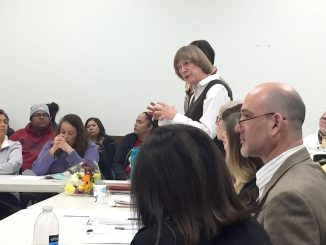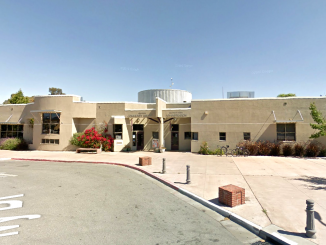
BY ALLISON LEVITSKY
Daily Post Staff Writer
Four mid-Peninsula school districts will ask voters for money in the June 5 primary.
Three of the districts — Ravenswood, Las Lomitas and Mountain View-Los Altos — are proposing bond issues to build or renovate classrooms.
Belmont-Redwood Shores wants a new parcel tax and Ravenswood wants voters to renew a parcel tax that’s expiring. Parcel taxes pay for salaries.
Here’s a look at the measures before voters:
Las Lomitas
Las Lomitas Elementary School District — which serves Menlo Park, Atherton and Ladera — will be asking voters to approve Measure R, a 30-year, $70 million bond issue.
The bond would fund roof repairs, outdated fire alarms, upgrade heating, air conditioning, ventilation and electrical systems, make seismic upgrades, make campuses accessible for the disabled and upgrade classrooms to meet health and safety codes.
None of the tax’s proceeds could be used for teacher or administrator salaries, benefits or pensions.
The tax would cost $30 per $100,000 of home value, or $300 per year for a $1 million home.
At least 55% of voters would need to approve the bond. The cost to repay the bonds will be $123.9 million including interest and fees.
The bond would be the second in five years at Las Lomitas. In 2013, 73.9% of voters passed Measure S, a $60 million bond measure for repairs, upgrades and construction projects.
Ravenswood’s bond measure
The Ravenswood City School District, which serves East Palo Alto and eastern Menlo Park, will be going to voters for a 32-year, $70 million bond measure.
Measure S would cost $30 per $100,000 of home value, or $300 per year for a $1 million home.
At least 55% of voters would need to approve the bond. The repayment cost of the bonds is $126.5 million.
The bond would fund repairs, renovations and upgrades to classrooms, labs and bathrooms at school, including the removal of hazardous materials like asbestos and lead.
Other purposes include plumbing, electrical system, heating, ventilation and air conditioning upgrades and repairs, accessibility upgrades for the disabled and furniture and equipment purchase and replacement.
The bond would also go toward technology purchase, upgrades and repairs, fire and safety system updates and energy efficiency projects.
The funds couldn’t be used for teacher or administrator salaries or operating expenses.
Ravenswood’s parcel tax
Ravenswood is also seeking approval for renewal of an eight-year, $1.2 million annual parcel tax — 2.5% of the district’s $48 million annual budget.
The parcel tax, Measure Q, amounts to $196 per year, adjusted annually for inflation up to 3% through June 30, 2026.
Those who would be exempt from paying the tax include seniors age 65 and older, those who receive Supplemental Security Income for a disability and those who receive Social Security Disability Insurance benefits and make less than 250% of the 2012 federal poverty guidelines, or $57,625 for a family of four.
The tax would be adjusted annually for inflation not to exceed 3%. At least two-thirds of voters would need to approve the tax.
In 2016, 87% of Ravenswood voters approved a $44 million bond issue known as Measure H.
Mountain View-Los Altos
The Mountain View-Los Altos Union High School District is seeking a 30-year, $295 million bond issue known as Measure E.
The tax would cost 3 cents per $100 of home value. At least 55% of voters would need to approve the bond.
It will cost taxpayers $379 million to pay off the bonds.
The bond would fund improvements and construction of classrooms, science labs and libraries.
Belmont-Redwood Shores
The Belmont-Redwood Shores School District is seeking voter approval for a five-year parcel tax that would raise $1.4 million per year.
The district has ballooned in enrollment by 66% over the past nine years.
If Measure K passes, those who would be exempt from paying the tax include seniors age 65 and older, those who receive Supplemental Security Income for a disability and those who receive Social Security Disability Insurance benefits and make less than 250% of the 2012 federal poverty guidelines, or $57,625 for a family of four.
The district would be required to use the funds to “protect core academic programs” in math, science, technology, reading and writing, maintain art and music programs, keep school libraries open, expand reading and writing instruction and attract and retain teachers.
None of the tax’s proceeds could be used for administrator salaries, benefits or pensions.




At what point does a school district have enough money? I mean when do the tax increases stop. We struggle every April and December to come up with enough money to pay our property taxes, which are always going up. Can’t the school districts figure out how to operate on what they get now without asking for more? I hear Palo Alto Unified (my district) is going for a bond issue this fall. I’m voting NO. I’m tired to stretching my budget to pay for the excesses of our school systems. It’s time to do more with less.